AI can make your product more intuitive, personalized, and efficient, driving user satisfaction and growth. To integrate AI effectively, the SAMR framework offers a structured approach that can guide this transformation.
What is the SAMR Framework?
SAMR stands for Substitution, Augmentation, Modification, and Redefinition. Developed by Dr. Ruben Puentedura, this framework was originally designed for educational technology. However, its principles can be seamlessly applied to product development, offering a clear roadmap for integrating new technologies like AI.
The SAMR framework helps in categorizing the impact of technology on a product, allowing you to assess and implement AI enhancements systematically.
Substitution: AI replaces a traditional function with no change in functionality. It’s the simplest form of integration where the core task remains the same.
Augmentation: AI replaces a traditional function but with added improvements that enhance its performance.
Modification: AI significantly redesigns an existing function, transforming how it operates and offers substantial improvements.
Redefinition: AI creates entirely new functions that were previously inconceivable, revolutionizing the user experience and capabilities of the product.
By understanding and applying each level of the SAMR framework, you can methodically integrate AI into your product, making it more useful, efficient, and effective for your customers.
Substitution: AI as a Direct Replacement
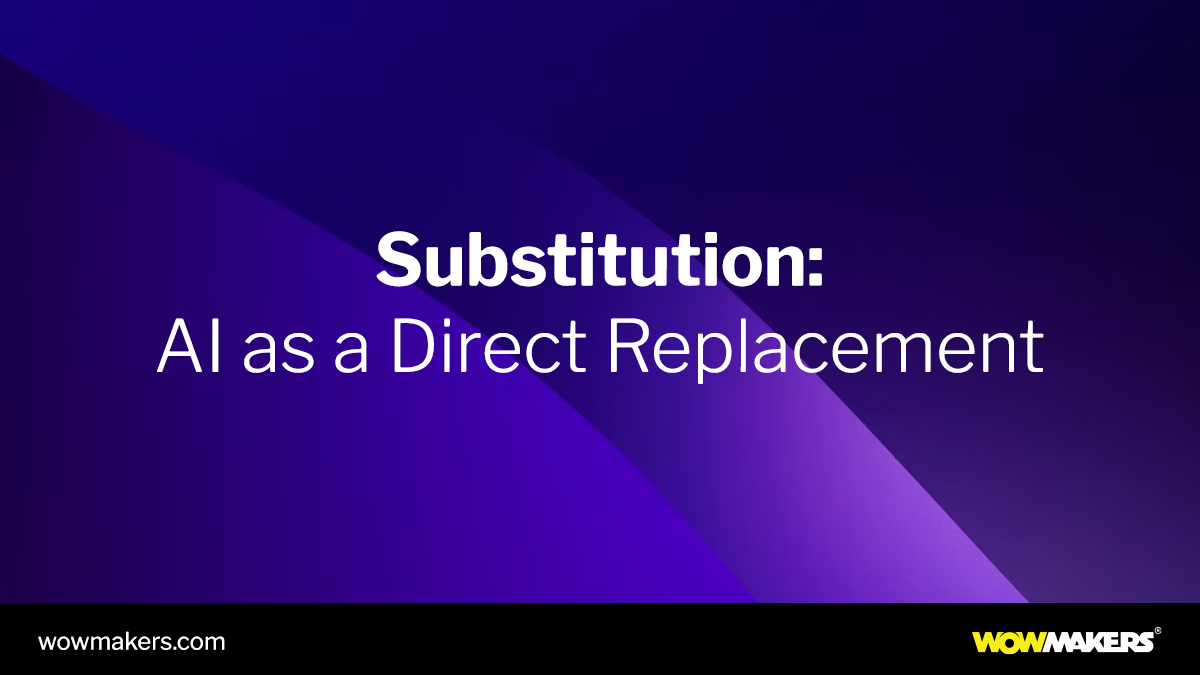
At the substitution level, AI takes over existing functions, making them faster or more efficient. This is the most basic level of integration, where AI does the same task as before, but typically in a more streamlined and automated way.
Substitution involves the direct replacement of an existing process or tool with an AI-powered alternative. The key here is that the core function remains unchanged, but the implementation becomes more efficient. For example, instead of manually responding to customer emails, an AI system can suggest replies or even automate the responses. This doesn’t change the nature of the task—communicating with customers—but it does make the process faster and less labor-intensive.
Examples:
Apple Siri: Replaces manual tasks such as setting reminders, sending messages, or searching the web with voice commands.
Gmail Smart Replies: Instead of typing out routine responses, AI suggests quick replies based on the email’s content, speeding up communication.
YouTube Auto-Captions: Rather than manually adding subtitles, AI generates them automatically, making videos accessible without extra effort.
Spotify Music Curation: AI curates playlists based on listening habits, providing a seamless music discovery experience.
Google Translate: Replaces manual translation with instant AI-driven translations, facilitating communication across languages.
Guidelines for Substitution:
- Identify repetitive tasks: Look for areas where manual work can be replaced with AI. Consider routine, repetitive tasks that consume time and resources.
- Evaluate efficiency gains: Ensure that AI substitution speeds up the process without compromising quality. The goal is to achieve the same output more efficiently.
- Maintain simplicity: The new AI-driven process should be as straightforward as the original. Users should not need additional training or support to adapt to the change.
Augmentation: AI for Functional Improvements
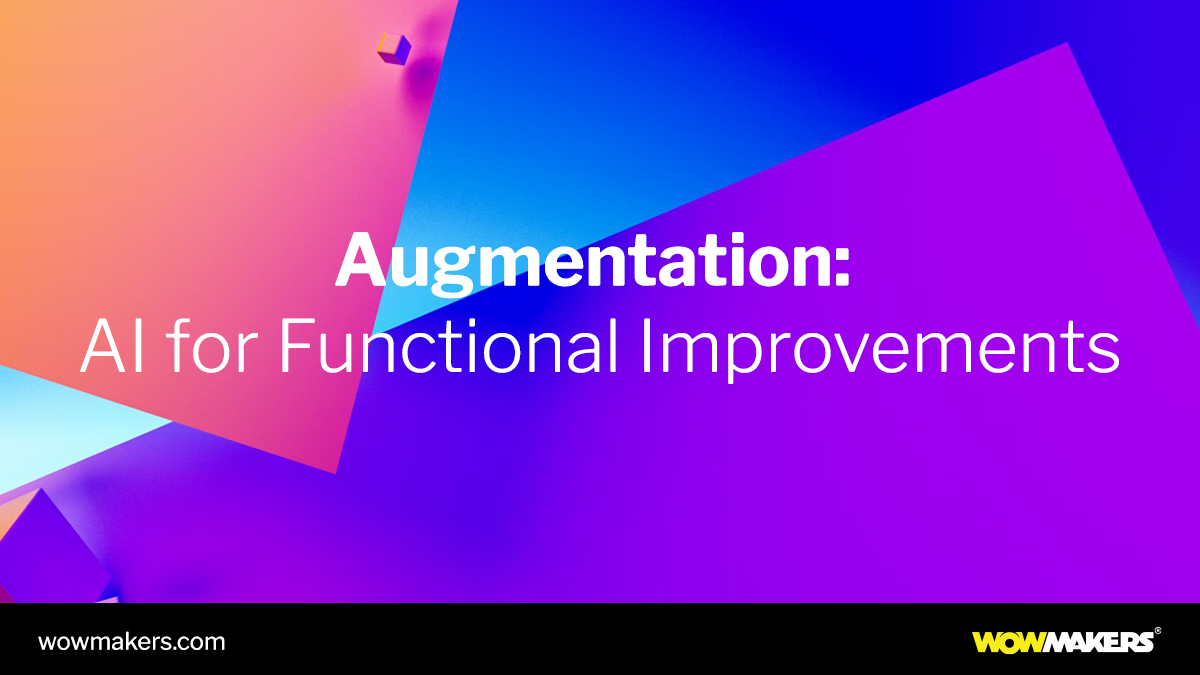
Next is augmentation, where AI enhances existing features, making them better and more useful. At this level, the original function is still present, but AI adds a layer of improvement that enhances the user experience.
Augmentation goes a step beyond substitution by not just replacing an existing function but enhancing it. AI adds capabilities that were not possible before, improving the overall performance of the task. For example, AI can analyze user data to provide personalized recommendations in a streaming service. This adds a new dimension to the user experience, making the service more engaging and useful.
Examples:
Netflix Recommendations: AI analyzes viewing history to suggest shows and movies tailored to individual preferences, enhancing content discovery.
Instagram Filters: AI recommends filters that best suit photos, turning a simple feature into a smart tool for enhancing images.
Google Photos: AI enhances photo search by recognizing people, places, and things, making it easier to find specific images.
LinkedIn Job Suggestions: AI analyzes profiles and job preferences to suggest relevant job openings, improving the job search experience.
Uber Surge Pricing: Enhances the ride-hailing experience by using AI to adjust prices based on real-time demand and supply conditions.
Guidelines for Augmentation:
- Enhance high-use features: Identify features that users interact with frequently and consider how AI can make these interactions smoother or more personalized.
- Add predictive capabilities: Use AI to anticipate user needs and behaviors, providing recommendations or adjustments proactively.
- Iterative implementation: Roll out enhancements gradually and gather user feedback to refine the AI’s performance and ensure it meets user needs.
Modification: AI for Significant Redesign
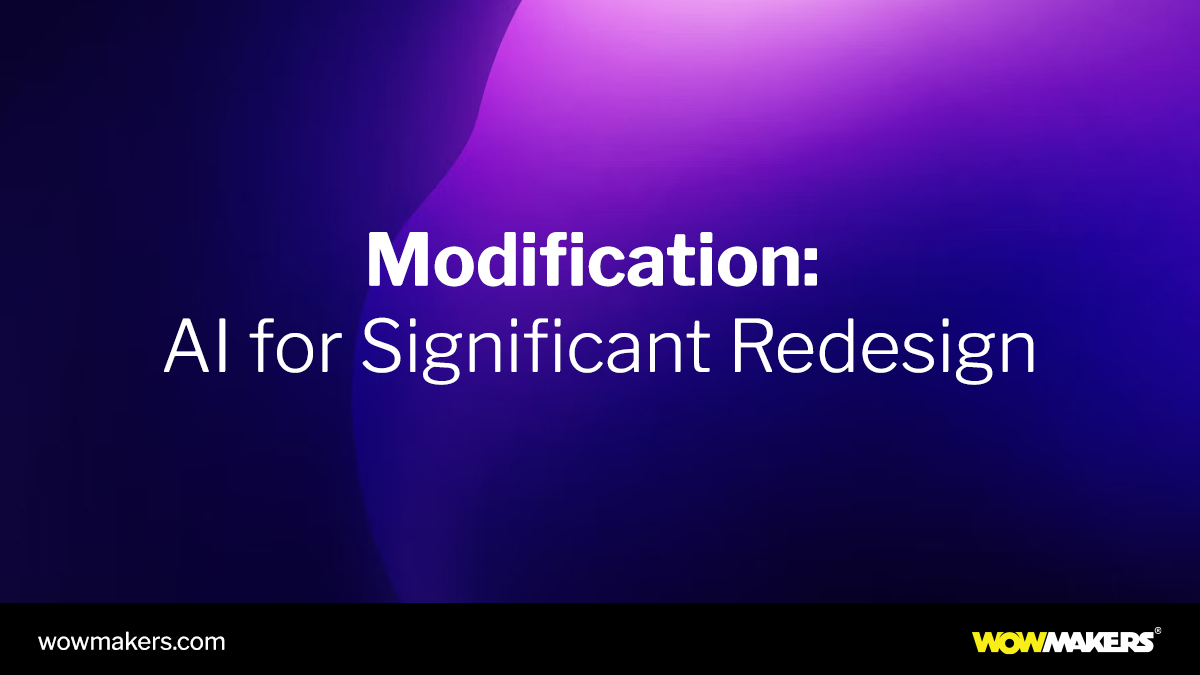
At the modification level, AI fundamentally changes how features work, improving them significantly. This involves a more profound change than augmentation, where AI technology transforms the existing process into something more effective and efficient.
Modification represents a deeper integration of AI, where the core function undergoes significant changes to improve its effectiveness. The task or feature is redesigned to leverage AI’s strengths fully. For instance, AI can analyze large datasets to provide insights that were not previously accessible, transforming how decisions are made. This level of integration can lead to substantial improvements in user experience and operational efficiency.
Examples:
Grammarly Advanced Writing Insights: AI not only checks for basic grammar and spelling errors but also provides suggestions for improving clarity, tone, and engagement in writing, transforming the editing process.
Adobe Photoshop Neural Filters: AI-powered filters enable advanced photo editing capabilities, such as changing facial expressions, altering ages, and transferring styles from one image to another, significantly enhancing creative possibilities.
Facebook Ads: AI optimizes ad delivery by analyzing user behavior and preferences, making ad campaigns more effective and targeted.
Google Assistant: Transforms voice search by understanding context and providing conversational responses, redefining user interaction with search engines.
Guidelines for Modification:
- Redesign key workflows: Look for areas where AI can significantly improve the efficiency and effectiveness of core functions. This might involve rethinking how users interact with the product at a fundamental level.
- Prioritize high-impact areas: Focus on changes that will have the most substantial impact on user satisfaction and product utility. High-traffic features or frequently used functions are good candidates.
- Test thoroughly: Ensure that the new AI-driven processes are robust and user-friendly before full-scale implementation. User testing and feedback are critical during this stage to refine and optimize the redesigned features.
Redefinition: AI for Creating the Inconceivable
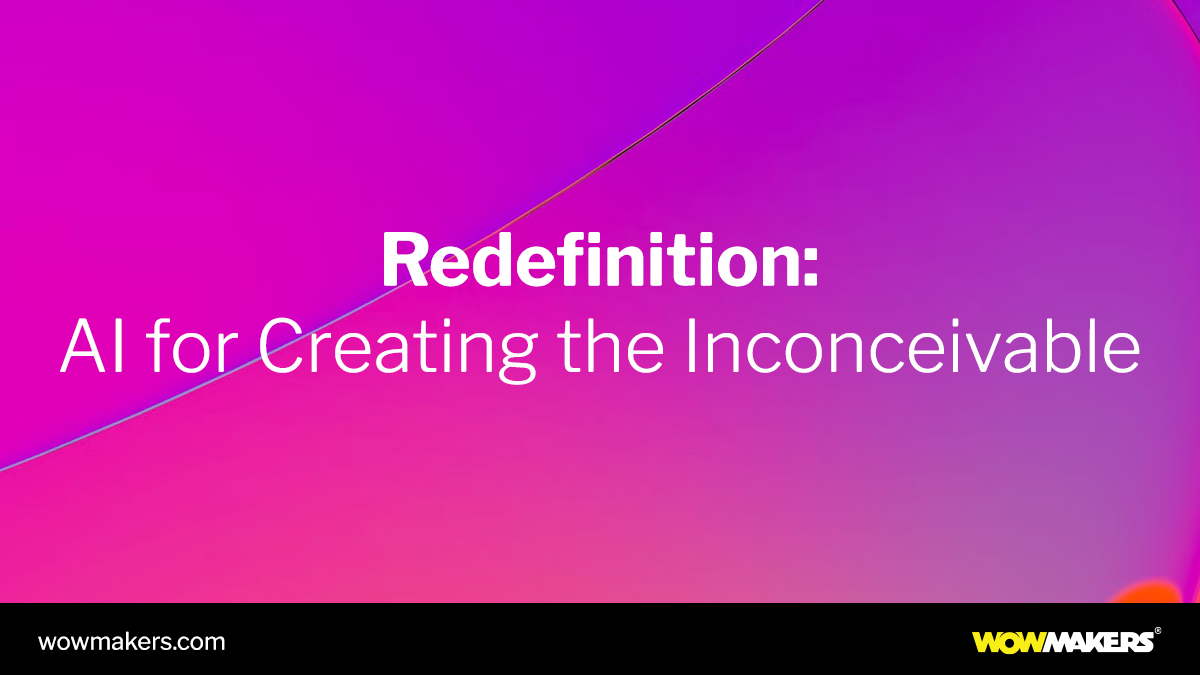
Finally, redefinition uses AI to create entirely new capabilities. This is the most transformative level, where AI enables tasks and functionalities that were previously impossible or unimaginable.
Redefinition is about leveraging AI to create new paradigms in product functionality. This level of integration allows you to offer features and services that redefine user interaction and engagement. AI can open up possibilities that weren’t even considered before, such as virtual reality experiences, advanced predictive analytics, or intelligent personal assistants. By rethinking what your product can do, you can offer unique value propositions that set you apart from competitors.
Examples:
Duolingo Language Learning: AI creates personalized learning paths and adapts lessons in real-time based on user performance, providing a tailored and engaging learning experience.
Tesla Autopilot: AI enables autonomous driving features, allowing the vehicle to navigate, change lanes, and park itself, fundamentally redefining the driving experience.
Google Maps AR Navigation: Uses AI and AR to provide real-time, on-screen navigation directions overlaid on surroundings, making it easier to find your way.
ChatGPT: AI-driven conversational agents provide human-like interactions, transforming customer service, content generation, and personal assistance in ways that were previously unimaginable.
Guidelines for Redefinition:
- Innovate boldly: Identify areas where AI can enable new functionalities that were previously inconceivable. Think outside the box and envision new ways to leverage AI.
- Focus on user experience: Ensure that these new capabilities provide significant value and enhance user engagement. The new features should solve real problems or create meaningful new experiences.
- Leverage cutting-edge technology: Stay updated with the latest AI advancements to continually push the boundaries of what’s possible. Collaborate with AI experts or invest in R&D to explore new possibilities.

Embrace Good UX and see your profits skyrocketing.
Talk to a UX expert
Embracing AI with the SAMR Framework
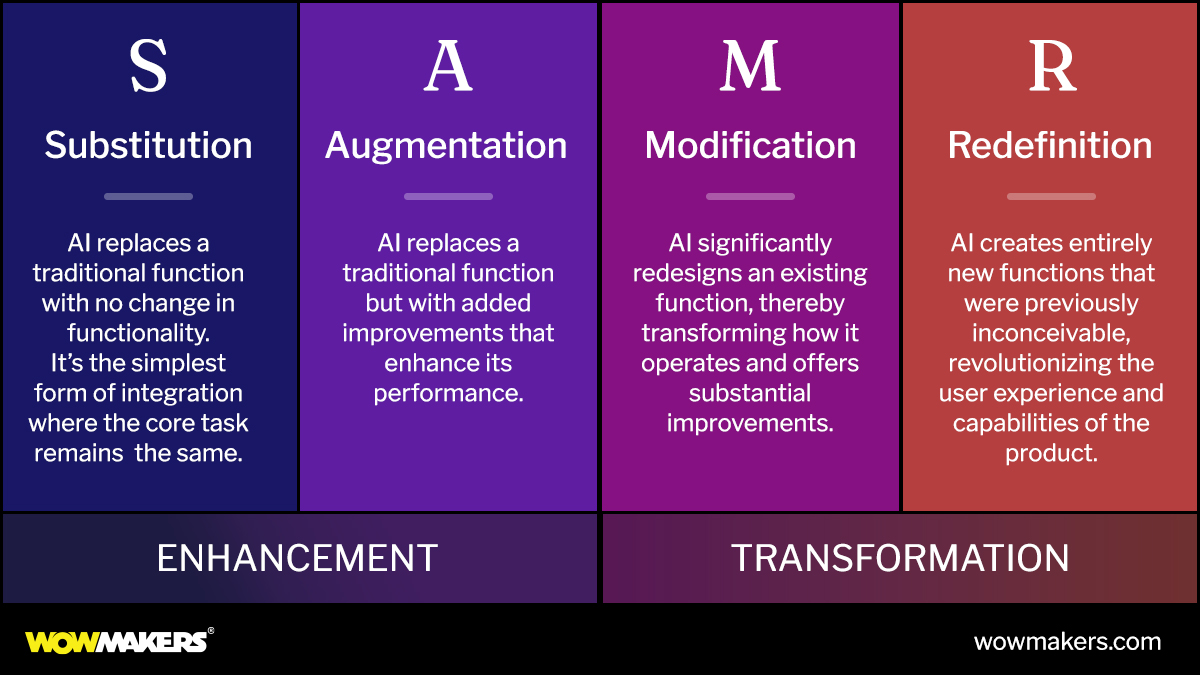
By integrating AI using the SAMR framework, you don’t just improve your product—you transform it. AI can make your product more responsive, intuitive, and engaging, helping you earn more happy customers.
To start, evaluate your product’s current features through the SAMR lens. Identify where AI can make the biggest impact, whether it’s through simple substitutions or groundbreaking redefinitions.
The future of product development is here, and it’s powered by AI. Embrace it, and revolutionize your product experience today.
By leveraging the SAMR framework and AI, you’re not just upgrading your product; you’re redefining what’s possible. Dive in and start innovating now.










